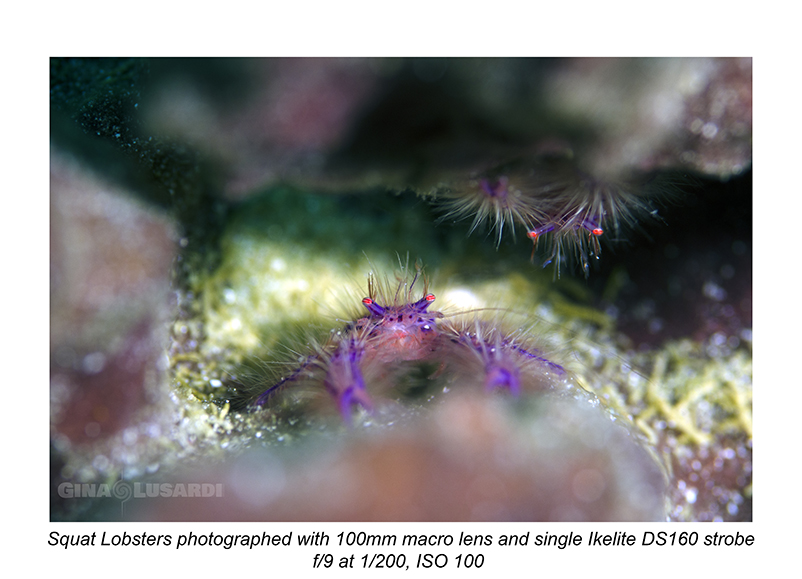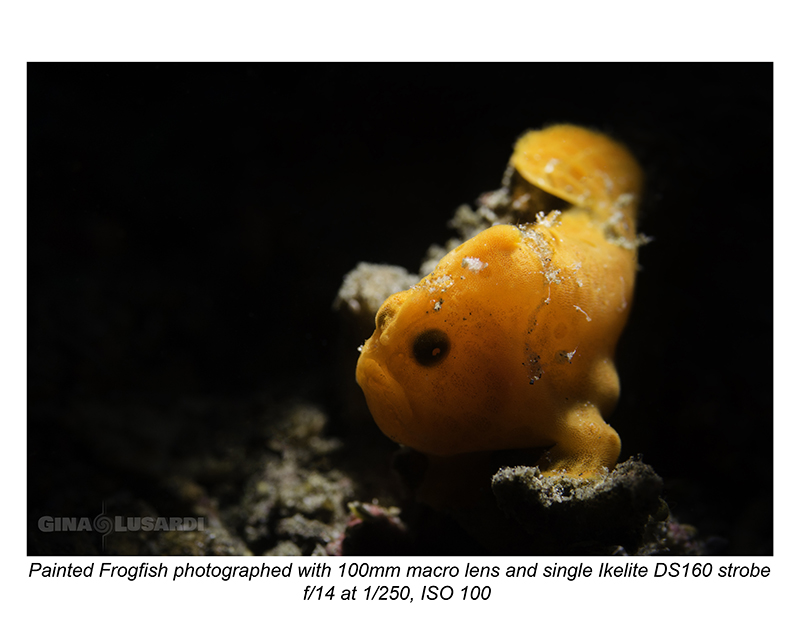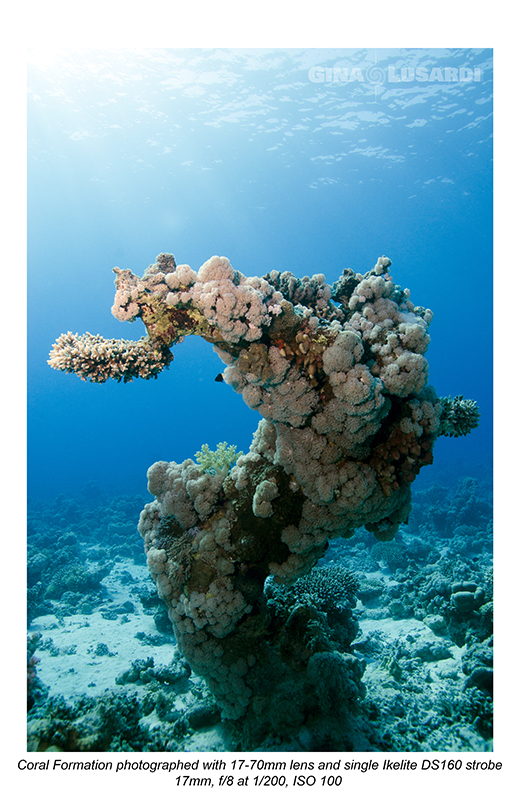 Single strobe photography can yield beautiful images. Whether you prefer to keep your rig as lightweight and compact as possible, or if you’re still saving up for that second strobe, there is no reason you can’t achieve high-quality imagery using only one strobe.
Single strobe photography can yield beautiful images. Whether you prefer to keep your rig as lightweight and compact as possible, or if you’re still saving up for that second strobe, there is no reason you can’t achieve high-quality imagery using only one strobe.
Macro
When it comes to macro photography, using a single strobe has the benefit of allowing you to squeeze into tight spaces that might not be reachable with a dual strobe rig. One strobe can create dramatic side lighting and back lighting as well as traditional front lighting. Nevertheless, one issue to watch out for is producing unwanted shadows. For the most part, this can be avoided by being mindful of the light position in relation to the subject and by using a diffuser to soften the light produced by the strobe.
Certain macro techniques actually call for only a single strobe. In particular, snoots, such as such as the 10Bar snoot or Retra light shaping device, can be attached to the front of a strobe to create dramatic macro images. Snoot photography greatly limits the beam angle of the strobe creating images with dark backgrounds that completely separates the subject from its environment. Positioning the snoot on top of the subject to get a pooling effect may be the most common use of a snoot however, there are many ways to light a macro subject using this technique.
One major benefit to using a single snooted strobe for macro work is that backscatter is extremely limited, even in murky waters. I n fact, even when visibility seems like it may be too bad for any type of underwater photography, a snoot may allow you to continue shooting. While snoots are a great way to utlize a single strobe, it is important to note that there is learning curve. Optical Ocean reccomends snoots for advanced photographers who have already mastered more simple macro techniques. As with all types of underwater photography, but even more crucial when photographing benthic animals, perfect trim and buoyancy is neccessary not to cause any damage to organisms and their habitat.
n fact, even when visibility seems like it may be too bad for any type of underwater photography, a snoot may allow you to continue shooting. While snoots are a great way to utlize a single strobe, it is important to note that there is learning curve. Optical Ocean reccomends snoots for advanced photographers who have already mastered more simple macro techniques. As with all types of underwater photography, but even more crucial when photographing benthic animals, perfect trim and buoyancy is neccessary not to cause any damage to organisms and their habitat.
Wide Angle
Typically, wide angle photography is carried out using two strobes. A single strobe can be a bit more challenging to master. Two strobe wide angle photography enables even lighting across a larger portion of the image and cancels out shadows that would be produced by a single light source. When using a single strobe, the photographer needs t o choose where in the image the light will fall and “spot” light the subject carefully.
o choose where in the image the light will fall and “spot” light the subject carefully.
One benefit to using a single strobe for wide-angle photography, especially in water with a high number of particulates, is that it limits backscatter; half the light output, half the backscatter. Most of the time when shooting wide angle with one strobe, treat the strobe like the sun in the sky and light my subject from above, using a long arm. This allows more natural shadows to form below the subjects.
One challenge of using a single strobe concerns light quality. To achieve natural looking lighting, it is crucial to minimize harsh shadows. A diffuser will help by not only softening the light, but also widening the beam angle of the strobe. To create soft, natural lighting with one strobe, use high-power strobes with wide beam angles and a diffuser to help to achieve the best results.
Final Thoughts
One strobe may not be optimal for some situations, but it doesn’t mean you can’t get the shot. It just means you may have to work harder to achieve it. There are plenty of times where a single strobe may be the best option. Particularly, when shooting macro, a single strobe offers the benfit of fitting into tighter places. Wide angle photography cane be more challanging, but the best thing to do is to most of it. Just like with all aspects of photography, practice and patience will pay off.
For more information about strobe positioning for both single and dual systems please see our Handbooks for Better Photography.
For more tips and tricks Click Here.

